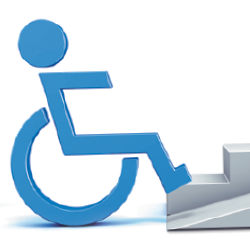 |
 Candy Adams,
Candy Adams,
CTSM, CME,
CEM, CMP, CMM,
is an independent exhibit-management
consultant, trainer, speaker, writer, and an Exhibitor conference
faculty member.
CandyAdams
@BoothMom.com
|
| |
 enting an exhibit can be a smart choice, both financially and logistically. The industry rule of thumb is that renting an exhibit makes sense if you're just going to use it once or twice, since a one-time exhibit rental generally costs about one-third of an equivalent new build. Renting lets you avoid the costs and headaches of long-term storage, reconfiguration for multiple shows, and refurbishment. What's more, rental exhibits provide flexibility and functionality to suit a wide range of exhibiting needs. enting an exhibit can be a smart choice, both financially and logistically. The industry rule of thumb is that renting an exhibit makes sense if you're just going to use it once or twice, since a one-time exhibit rental generally costs about one-third of an equivalent new build. Renting lets you avoid the costs and headaches of long-term storage, reconfiguration for multiple shows, and refurbishment. What's more, rental exhibits provide flexibility and functionality to suit a wide range of exhibiting needs.
But not every rental exhibit is the same. Before you sign on the dotted line, familiarize yourself with the three types of rental exhibits commonly available: pop-ups and portables, modular and system exhibits, and hard-wall exhibits. And if you find yourself wanting something a little less traditional, I've also included examples of my favorite out-of-the-box rental exhibits.
Pop-ups and Portables
Let's start with what's usually the most common - and smallest - rental available: an 8-by-8-foot or 8-by-10-foot pop-up exhibit. For an exhibitor with a linear booth, such as a 10-by-10-foot or 10-by-20-foot space, this type of rental makes for an effective backdrop to display
your company name, your logo, and a few key graphics messages.
In addition to their modest footprint, pop-ups are also generally the least expensive of all rental options, especially if the graphics on them are mounted onto a substrate that can be reused on different back-wall structures. Most pop-ups will also save you money when it comes to installation and dismantle. That's because union rules in most cities allow an exhibitor to set up an exhibit if it takes 30 minutes or less, it requires no hand tools or ladders for assembly, and it's no more than 8 feet tall. Coincidentally, pop-ups typically meet all three criteria.
Lightweight materials accompany the pop-ups' small stature. Such structures are so lightweight, they are often
called "portables." But I found out the hard way that an 8-by-10-foot pop-up exhibit complete with graphics panels, lights, and a carrying case can weigh 75 pounds. That's more than I want to lug around on the show floor. So be sure the portable property you rent meets your definition of the word before you bank on hand carrying it to your booth space.
The downside of pop-ups is that due to their lightweight materials, cost
effectiveness, and sheer portability,
they are relatively common and don't exactly set you apart from the rest of the pack. Even though you have some customizability with the back walls, which can usually be flat, wavy, concave, or convex, your pop-up will still look like the majority of other pop-ups on the trade show floor.
Modular Exhibits
Moving up the rental exhibit ladder, modular (aka system) exhibits offer exhibitors an opportunity to build just about anything in any size. With a few custom touches, you're only limited by the vendor's available rental inventory. I like to think of modular exhibits as Legos for adults. Such rentals are often constructed from aluminum frames, sometimes with honeycomb interiors for strength and stability, and then laminated or sheathed in Sintra and slid into the framework to create panels.
Depending on your specific needs, modular exhibits can be used to create pretty much any shape, including round towers, rectangular kiosks, product-display walls, meeting rooms, and storage areas. What's more, visual interest can be added quite easily via truss, wall-covering graphics, and customized lighting. Many of the modular exhibits are masters of disguise and can easily mimic their more expensive custom counterparts. They're also lightweight, saving you money on both shipping and material handling, and depending on the complexity of the fastening system that holds the pieces together, they can also save money when it comes to I&D.
Conversely, if the modular exhibit you select features complex architecture and fasteners, requires hand tools for assembly, or takes longer than 30 minutes to set up, you won't be able to install it yourself and may pay a hefty price for I&D labor.
Hard-wall Exhibits As far as the figurative Mercedes Benz of the exhibiting industry goes, custom-laminated, wood, hard-wall exhibits are still on top, although
using them will generally be the
most expensive rental option in both shipping and material-handling costs due to their sheer weight.
Some hard-wall exhibits are fastened together using wood screws, while others feature a more modern cam-lock and Allen-wrench system for joining the panels, which speeds setup time. These panels are usually available in either black or white laminate, but for a true custom look, digital photomurals can be mounted on the entire outside surface of the panels. This technique results in a smooth, custom look that isn't typical of less expensive modular rentals.
Most exhibit houses can customize their standard 4-by-8-foot panel inventory with other touches such as elaborately shaped toppers, custom lighting, additional reinforcement for holding video displays and products, and custom laminates. Naturally, all those display upgrades come at a price, making hard-wall booths more expensive than their pop-up and modular exhibit counterparts.
Unconventional Rentals
If none of the aforementioned standard rental options strike your fancy, try asking your exhibit house this question: "What unusual properties are available for rent in your warehouse?" Surprisingly, I've been offered everything from an alien spacecraft and faux oak trees to a giant sleigh.
But even if your exhibit house doesn't have a vast inventory of oddities, you can still mix and match rental components to create an unusual exhibit that will stand out from the same-old rentals next door.
For example, one of my clients (a university located in Saudi Arabia), wanted something different and memorable - two words not necessarily associated with "rental" - for a recent show in Los Angeles. It wanted to recreate its Middle Eastern campus culture and, luckily, we happened to be not far from Hollywood studios and all their prop houses. After talking with event producers, making a few calls to the props departments of television and movie studios, and even calling to find companies who rented (and would deliver) 12-foot-tall palm trees, we had rugs, furniture, and décor, all for less than $1,500.
Home-improvement stores are also goldmines for out-of-the-box exhibit ideas. One of my favorite exhibits was by a company whose product wasn't quite ready to launch at the trade show, so it went with a "still under construction" theme. It used yellow and black caution tape on rented orange stanchions to mark off an area in its booth space that contained scaffolding and various power tools, such as drills and nail guns that were rented from an equipment-rental vendor to complete the theme.
Staffers had decorated the scaffolding with empty fast-food bags, donut boxes, and to-go coffee cups to replicate the debris common at a construction site. The exhibitor's corporate identification signs were hung from the highest level of scaffolding, thus avoiding rigging fees, and its kiosks were constructed with wood-plank tops on old galvanized garbage cans rented from an exhibit house. To pull it all together, booth staffers were decked out in hard hats, denim shirts, and jeans.
Before mixing and matching traditional rental exhibitry with unconventional items, consult the show's exhibitor services manual for any restrictions, and make sure the objects you're using are made of materials approved by the convention center's fire marshal. When in doubt, ask the vendor providing it for the fire specifications and/or check with the local fire marshal at the venue where the properties will be used.
With that in mind, as you plan your next exhibit, decide what it will take to make a lasting impression: traditional rental properties, an out-of-the box exhibit, or a combination of both. Whatever you choose, keep your company's messaging and brand identity in mind to make sure your next rental exhibit is not only memorable, but also marketable.e
|





 enting an exhibit can be a smart choice, both financially and logistically. The industry rule of thumb is that renting an exhibit makes sense if you're just going to use it once or twice, since a one-time exhibit rental generally costs about one-third of an equivalent new build. Renting lets you avoid the costs and headaches of long-term storage, reconfiguration for multiple shows, and refurbishment. What's more, rental exhibits provide flexibility and functionality to suit a wide range of exhibiting needs.
enting an exhibit can be a smart choice, both financially and logistically. The industry rule of thumb is that renting an exhibit makes sense if you're just going to use it once or twice, since a one-time exhibit rental generally costs about one-third of an equivalent new build. Renting lets you avoid the costs and headaches of long-term storage, reconfiguration for multiple shows, and refurbishment. What's more, rental exhibits provide flexibility and functionality to suit a wide range of exhibiting needs.


